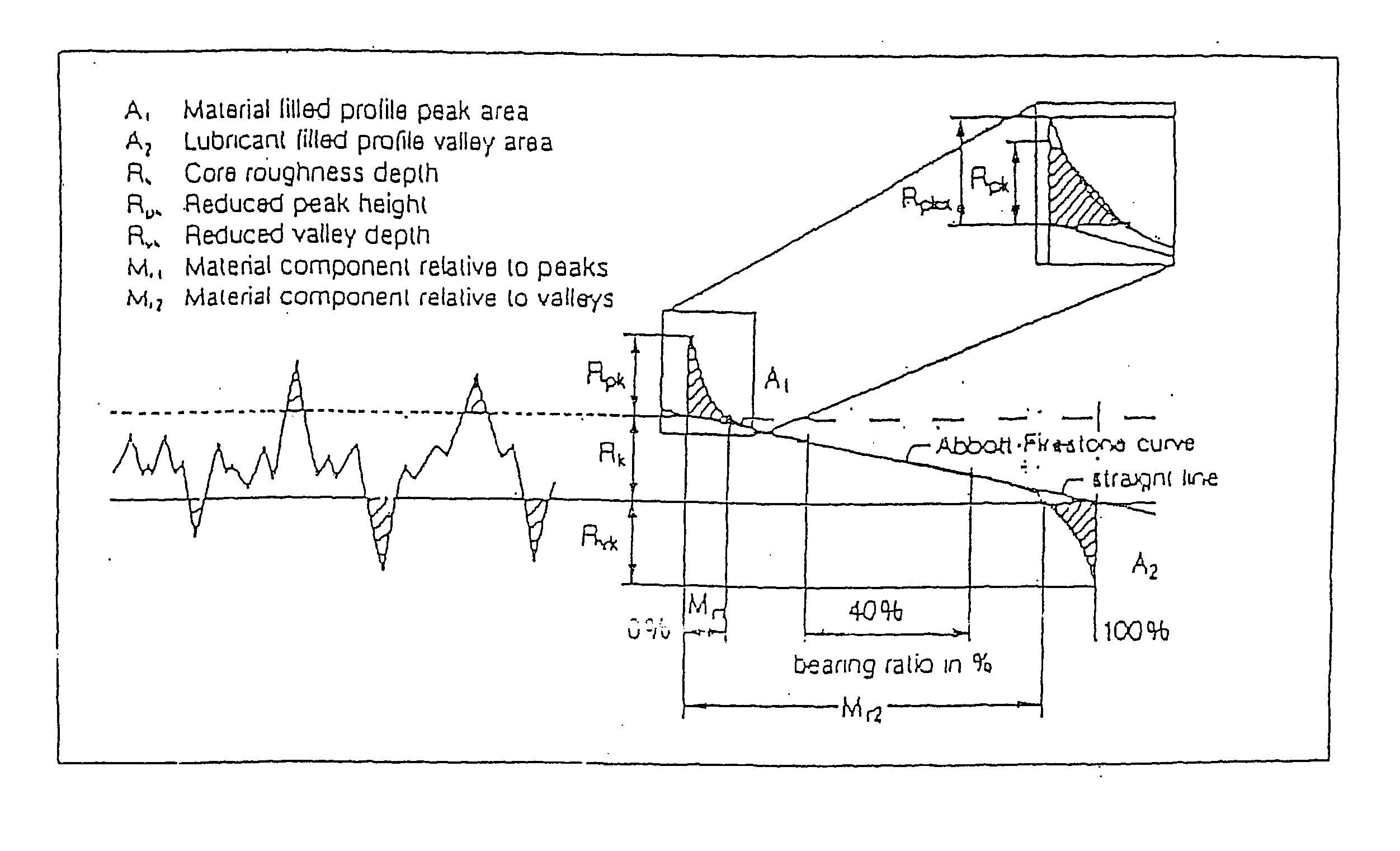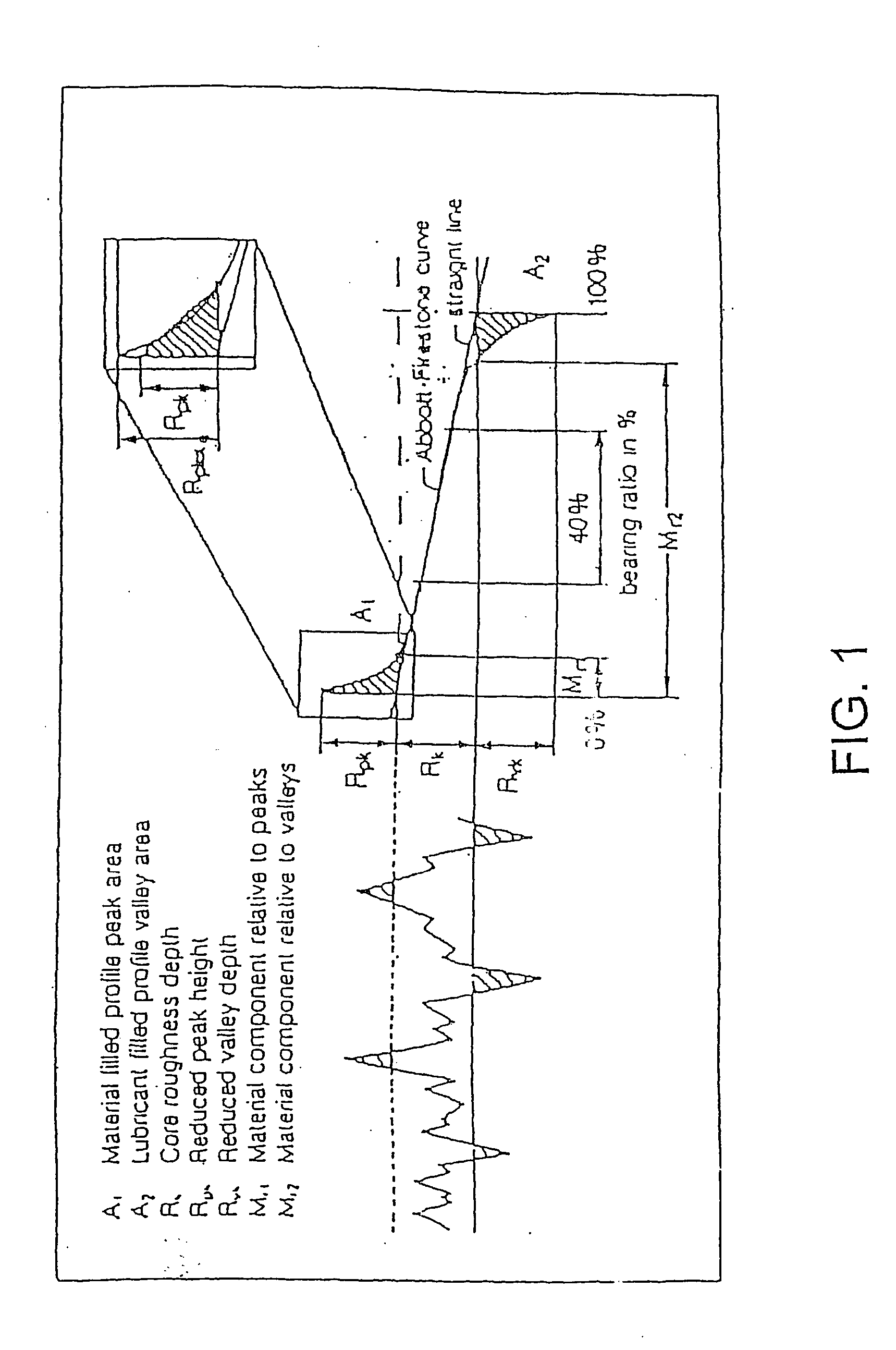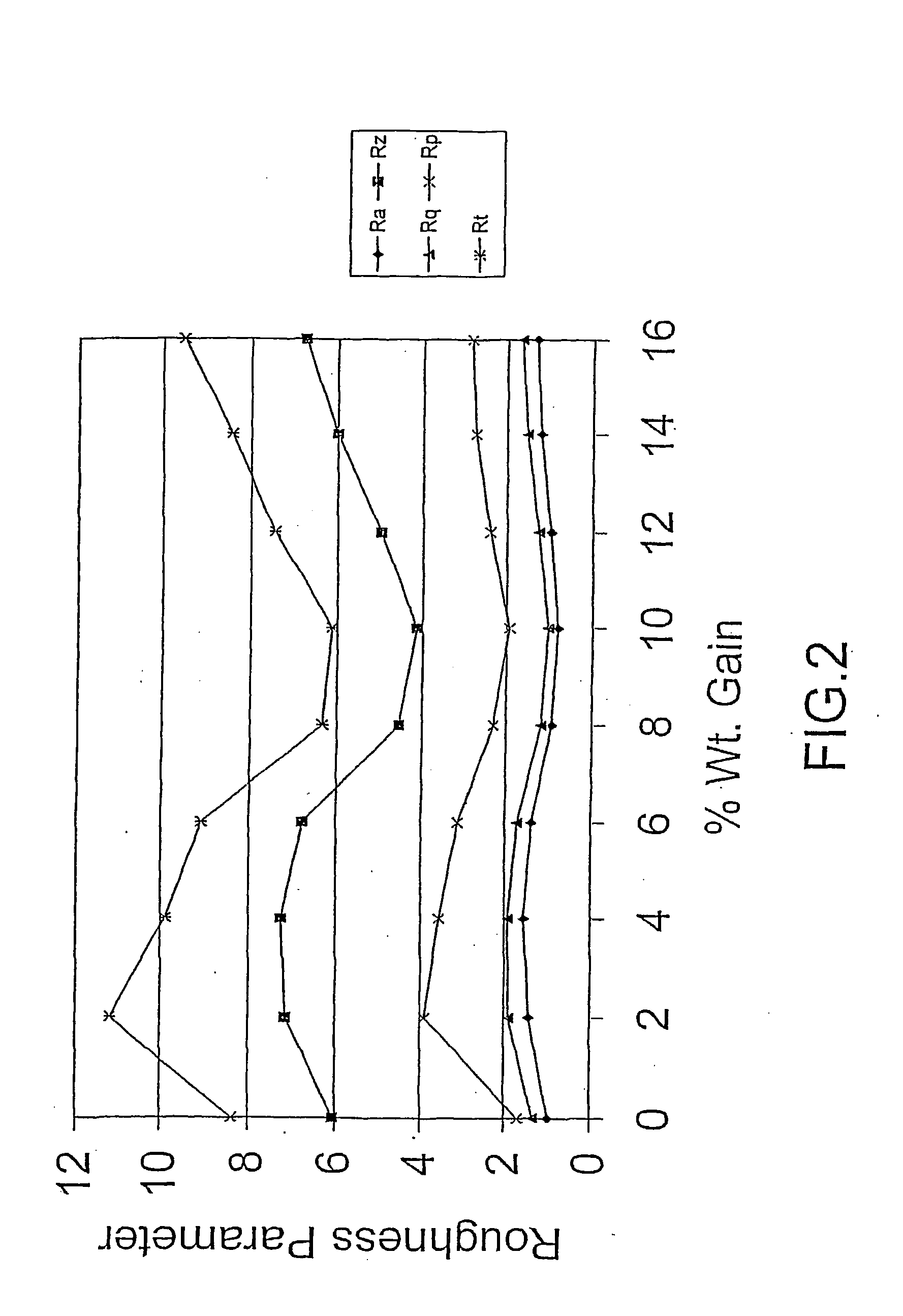Surface roughness quantification of pharmaceuticals, herbal, nutritional dosage forms and cosmetic preparations
a technology of surface roughness and quantification method, applied in the direction of antibody medical ingredients, microcapsules, capsule delivery, etc., can solve the problems of uncoated tablets, roughness, peeling, blistering, etc., and achieve the effect of evaluating surface roughness and hardness
- Summary
- Abstract
- Description
- Claims
- Application Information
AI Technical Summary
Benefits of technology
Problems solved by technology
Method used
Image
Examples
example 1
[0033] The following Example illustrates the relationship between coating weight grain and roughness parameters of Microcrystalline Cellulose Avicel®. The testing shows the various properties of Avicel® as they relate to roughness parameters. The testing evaluates the change in surface roughness of the dosage form as a function of wet granulation, direct compression and compression pressure.
[0034] The perthometer used was a state-of-the-art Mahr perthometer, a complete package of motor driven contact stylus, X / Y-table PZK for mounting the tablets, and software for processing the data. The contact stylus scanned over an area of 3.0 mm2 with a tracing length of 1.75 mm to produce 201 profiles. All the surface roughness parameters were calculated for every profile, and the mean and average of all 201 profiles were collected to represent the complete topography.
[0035] Bilayered tablets were prepared and a custom-designed cellulose acetate pseudolatex dispersion was applied for osmotic...
example 2
[0045] Ubiquinone, also known as Coenzyme Q10, is an important component of the mitochondrial respiratory chain. Because of the poor aqueous solubility, Coenzyme Q10 (CoQ10) presents a challenge when developing a formulation for oral administration. Many approaches have been used to improve the in vitro dissolution of CoQ10, including complexation, preparation of redispersible dry emulsion, solid dispersion, and eutectic-based self-nanoemulsified drug delivery system (SNEDDS). A wax-like paste is formed when a eutectic-based SNEDDS of CoQ10 is mixed with small quantities of the copolyvidone Kollidon VA 64. The effects of an adsorbed oily formulation on the surface roughness of the tablets can be determined.
[0046] A solid-state SNEDDS of CoQ10 was prepared as follows: CoQ10 and lemon oil at a ratio of 1:1 were accurately weighed into screw-capped glass vials and melted in a water bath at 37° C. Cremophor EL and Capmul MCM-C8 were added to the oily mix, each at a final concentration ...
example 3
[0058] Aqueous pseudolatex systems are advantageous over organic-based coating systems because aqueous systems are devoid of criteria pollutants such as carbon monoxide, nitrogen oxides, nonmethane volatile organic compounds, and sulfur dioxide. Cellulose acetate butyrate (CAB), which is available from FMC Corporation and Eastman Chemical Company, has been used for organic-based coatings for controlled drug delivery. A pseudolatex was prepared with aqueous based CAB and polyvinyl alcohol (stabilizer) by a polymer emulsification technique. Surface roughness parameters of the pseudolatex CAB coatings on inert Nu-Pareil beads were measured as a function of coating weight gain.
[0059] CAB pseudolatex was prepared by the polymer emulsification method. The CAB selected had an acetyl content of 13% w / w and a butyryl content 37% w / w, and had the lowest Tg among all available CABs and cellulose acetate polymers. This acetyl and butyryl proportion of CAB imparts a good blend of both hydrophob...
PUM
| Property | Measurement | Unit |
|---|---|---|
| weight | aaaaa | aaaaa |
| length | aaaaa | aaaaa |
| area | aaaaa | aaaaa |
Abstract
Description
Claims
Application Information
 Login to View More
Login to View More - R&D
- Intellectual Property
- Life Sciences
- Materials
- Tech Scout
- Unparalleled Data Quality
- Higher Quality Content
- 60% Fewer Hallucinations
Browse by: Latest US Patents, China's latest patents, Technical Efficacy Thesaurus, Application Domain, Technology Topic, Popular Technical Reports.
© 2025 PatSnap. All rights reserved.Legal|Privacy policy|Modern Slavery Act Transparency Statement|Sitemap|About US| Contact US: help@patsnap.com



